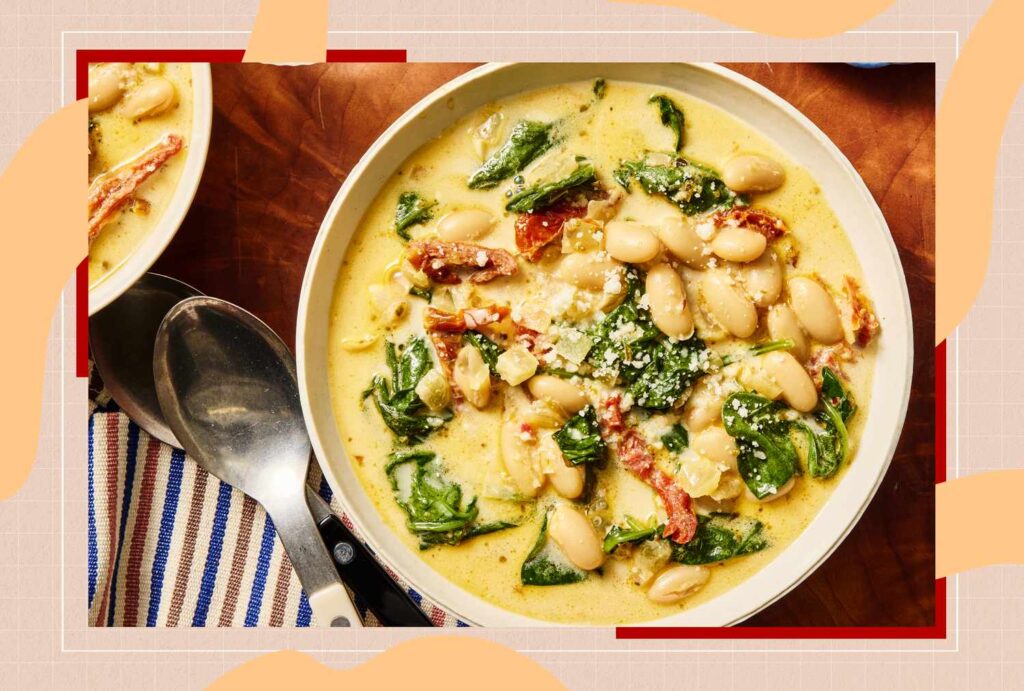- Men who swapped beans for meat lost weight without cutting calories, a study found.
- Replacing red meat with legumes also lowered LDL cholesterol in just six weeks.
- Easy swaps like bean tacos or mixed burgers can improve health without overhauling your diet.
If you’re a fan of delicious taco nights, your routine is probably down pat—chop some veggies, grab the salsa, brown the ground beef, warm the tortillas and call everyone to the table. But as one recent study suggests, there’s a very easy swap you can make in that meal that could help you reach or maintain a healthy weight, according to a new study.
Just swap in a hearty scoop of seasoned beans for some of that meat. You’ll still enjoy the same tacos and the same full plate, but making that substitution may help you lose weight without needing to count your calories. In a six-week randomized trial, men who made that kind of trade—beans instead of part of their red and processed meat—lost more weight without cutting calories, and their LDL cholesterol improved too.
That’s the takeaway for the rest of us: you don’t have to eat less to make progress. Tweaking what’s on the plate—more fiber-rich beans, a little less meat—can quietly move the needle on weight and heart health while dinner still tastes like dinner. Let’s break down this study, which was recently published in the European Journal of Nutrition.
How Was This Study Conducted?
This was a six-week randomized controlled trial in Finland with 102 healthy men. Participants’ average age was 38. The were assigned to one of two diets:
- Meat group: This group ate about 760 grams per week of red and processed meat. That’s roughly the average intake for Finnish men, and that meat supplied about 25% of their diet’s total protein.
- Legume group: This group ate about 200 grams per week of red and processed meat, which is the amount aligned with a planetary health diet recommendation. They also ate legume-based foods that matched the protein from about 560 grams of red meat. So, in their diets, legumes accounted for 20% of their diet’s total protein, while red and processed meat made up 5%.
Apart from these provided study foods, participants kept eating their normal diets. Researchers collected food records and measured blood and urine markers at the start and end of the study.
What Did the Study Find?
By the end of six weeks, the legume group lost more weight (around 2 pounds) than the meat group (around 0.5 pounds), though participants weren’t told to restrict calories. In fact, the legume group ate around 240 more calories per day. Body mass index (BMI) also decreased more in the legume group, but the difference may not be clinically significant. Total and LDL (“bad”) cholesterol also fell more in the legume group than in the meat group, which makes sense since legumes offer more fiber and healthy fats.
Finally, researchers found that the legume group’s vitamin B12 intake and blood levels dipped but remained adequate. Iron intake actually increased overall for the bean group—though this form is less bioavailable than animal-based iron, leading to equal iron levels in both groups—while iodine status stayed the same between groups in the short term.
Like all studies, this one has its limitations. The trial was relatively short at only six weeks. It also included only men. Participants self-reported food intake, which can introduce errors. Also, those in the legume group reported exercising more, which likely affected the results. Although participants in the legume group lost around 1.5 pounds more—consisting of small reductions in fat and muscle mass—compared to the meat group, there were no significant differences in body composition between groups, suggesting the observed weight change may reflect transient factors like hydration or bowel contents. While the design allows stronger conclusions than observational studies, longer trials in more diverse groups would help confirm the benefits researchers observed.
How Does This Apply to Real Life?
You don’t need a full dietary overhaul to see benefits—just make space for beans. Try these easy swaps a few times a week:
- For tacos and taco salads, use spiced black beans or lentils for half (or all) of the ground beef.
- When you’re grilling, make a half-and-half burger with some mashed beans mixed into lean beef (or go for a hearty bean patty).
- For a weeknight sheet-pan dinner, roast chickpeas with veggies and toss with a lemon-olive oil vinaigrette; serve alongside a smaller portion of steak or pork.
- Upgrade your pasta and stir white beans into marinara for extra protein and fiber. Top each bowl with a sprinkle of Parmesan.
- For simple meal prep, build a grain-and-greens bowl with a big scoop of beans, crunchy veggies and a simple dressing. Recipes like our Chickpea Grain Bowl with Feta & Tomatoes are perfect for this.
Make beans the easy choice: stash a few cans in the pantry and cook a pot of lentils over the weekend so they’re ready for you in the fridge all week. Beans play well with all kinds of big flavors, so let them bring out your culinary creativity. Add lemon and olive oil, a little garlic, herbs and maybe some spicy peppers. Bean-based dishes can quickly become something you look forward to each week.
Our Expert Take
In a six-week randomized trial, men who swapped part of their red and processed meat for bean-based foods lost more weight and improved their cholesterol—without being told to eat fewer calories. Building more beans into your week is a simple, budget-friendly move that can support weight management and heart health while keeping your diet nutritionally balanced.

